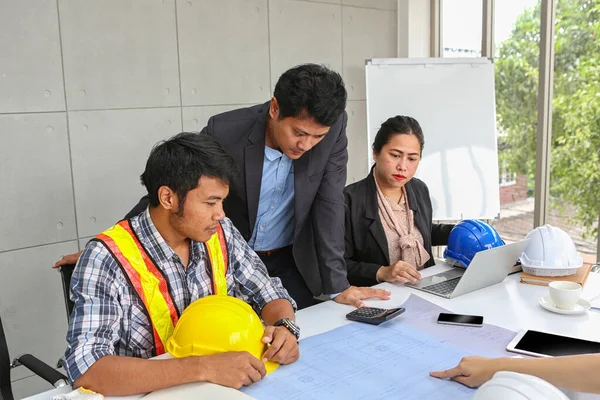Unlocking Development Potential: Understanding Section 94 Contributions
In the realm of urban planning and development, Section 94 Contributions play a pivotal role in shaping the landscape of communities. These contributions, often referred to as developer levies or impact fees, are crucial for funding essential infrastructure and amenities that support the growing needs of a burgeoning population. This article aims to delve into the intricacies of Section 94 Contributions, exploring their significance, mechanisms, and the broader impact on sustainable development.
The Basics of Section 94 Contributions
Definition and Purpose
Section 94 Contributions are statutory charges imposed on developers by local government authorities. The primary objective is to ensure that new developments contribute their fair share to the provision of infrastructure and services required to accommodate population growth. This can include funding for roads, parks, community facilities, and utilities.
Legal Framework
The authority to levy Section 94 Contributions is typically derived from planning legislation at the regional or municipal level. It provides a legal framework that empowers local governments to require financial contributions from developers, ensuring that the costs associated with increased demand for infrastructure are adequately addressed.
The Calculation Process
Factors Influencing Contributions
The calculation of Section 94 Contributions is a nuanced process that takes into account various factors. These can include the type and scale of the development, its potential impact on the local infrastructure, and the specific needs identified in the local government's development plans.

Transparent and Fair Assessment
It is crucial for the calculation process to be transparent and fair. Local governments often engage in community consultations and seek input from developers to ensure that the levies are equitable and accurately reflect the demands placed on infrastructure by new developments.
Utilization of Section 94 Contributions
The effective utilization of Section 94 Contributions is a crucial aspect of urban development, ensuring that funds collected from developers are strategically invested to meet the evolving needs of growing communities. Proper allocation of these contributions is fundamental to achieving sustainable and well-balanced urban environments.
Infrastructure Development
One primary area where Section 94 Contributions play a pivotal role is in funding infrastructure development. This includes the construction and enhancement of roads, bridges, public transportation systems, and utilities. By allocating funds to these critical elements, local authorities can mitigate the impact of increased population density, enhance mobility, and improve overall connectivity within the community.
Community Facilities and Amenities
Section 94 Contributions contribute significantly to the creation and maintenance of community facilities and amenities. Parks, recreational spaces, cultural centers, and sports facilities are often beneficiaries of these funds. This allocation not only fosters a sense of community but also enhances the overall quality of life for residents. Well-maintained public spaces play a vital role in promoting physical and mental well-being, social cohesion, and community engagement.
Educational Infrastructure
In some jurisdictions, Section 94 Contributions are directed towards supporting educational infrastructure. Funding for new schools, libraries, and other educational facilities helps accommodate the needs of a growing population. By investing in education, local governments aim to provide residents with access to quality learning environments, supporting the development of future generations and fostering a knowledgeable and skilled community.
Affordable Housing Initiatives
Recognizing the critical issue of housing affordability, some regions allocate a portion of Section 94 Contributions to affordable housing initiatives. These can include the development of subsidized housing units, housing trusts, or contributions to funds dedicated to affordable housing projects. This dual-purpose approach addresses the demand for housing while promoting social inclusivity and diversity within the community.
Monitoring and Evaluation:
- Establishing mechanisms to track the implementation and effectiveness of infrastructure projects.
- Periodic evaluations help refine contribution policies and address any shortcomings.

Regional Disparities:
- Consideration of regional variations and disparities in infrastructure needs and development potential.
- Tailoring Section 94 requirements to the unique characteristics of each locality.
Future Trends and Innovations:
- Exploring alternative funding mechanisms beyond traditional Section 94 contributions.
- Embracing innovative solutions to address emerging challenges in urban development.
Future Considerations and Conclusion
Evolving Regulations
As urban landscapes continue to evolve, so too must the regulations governing Section 94 Contributions. Future considerations may involve a reassessment of the calculation methodologies, enhanced transparency, and increased collaboration between developers, local governments, and the community.
Striking a Balance
In conclusion, Section 94 Contributions are a crucial tool in ensuring sustainable development. Striking a balance between the need for funding essential infrastructure and addressing concerns about affordability requires ongoing dialogue, adaptive regulations, and a commitment to creating vibrant and inclusive communities.As the urban development landscape continues to transform.
Case Studies: Section 94 Contributions in Action
Sydney's Infrastructure Renaissance
Sydney, Australia, stands as a prime example of how Section 94 Contributions can catalyze transformative infrastructure projects. The city's rapid growth prompted local authorities to leverage developer levies for major initiatives such as the WestConnex motorway and the revitalization of public spaces.
Challenges and Innovations in Vancouver
Vancouver, Canada, has encountered unique challenges in implementing Section 94 Contributions due to its diverse and dynamic urban environment. Striking a balance between fostering development and preserving the city's natural beauty has been an ongoing challenge. Innovations in green infrastructure funding, funded in part by developer contributions, have emerged as a key strategy to address both development needs and environmental sustainability.
Emerging Trends in Section 94 Contributions
With the advent of smart city concepts, there is a growing trend towards leveraging technology to enhance the impact of Section 94 Contributions. Advanced data analytics and digital platforms are being explored to optimize the allocation of funds, ensuring that investments align with evolving urban dynamics and community needs. Recognizing concerns about housing affordability, some jurisdictions are exploring innovative approaches to Section 94 Contributions.
55 Brisbane St, Surry Hills NSW 2010, Australia.
Phone: 614-1395-3869

